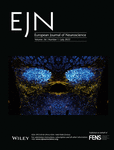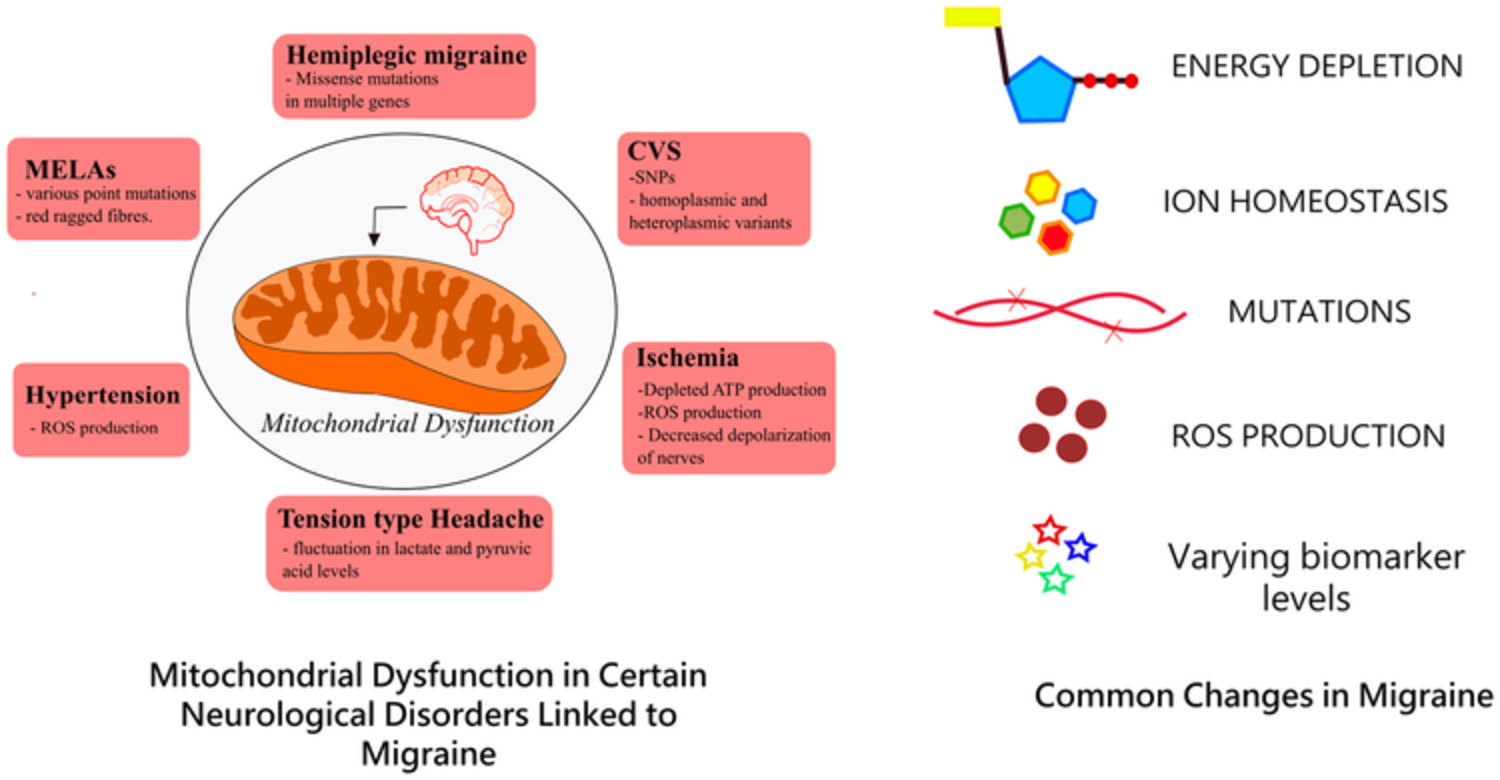Journal list menu
Export Citations
Download PDFs
ISSUE INFORMATION
MOLECULAR AND SYNAPTIC MECHANISMS
Opioid receptor activation modulates the calcium current in the cochlear outer hair cells of the rat
- Pages: 3543-3552
- First Published: 02 May 2022
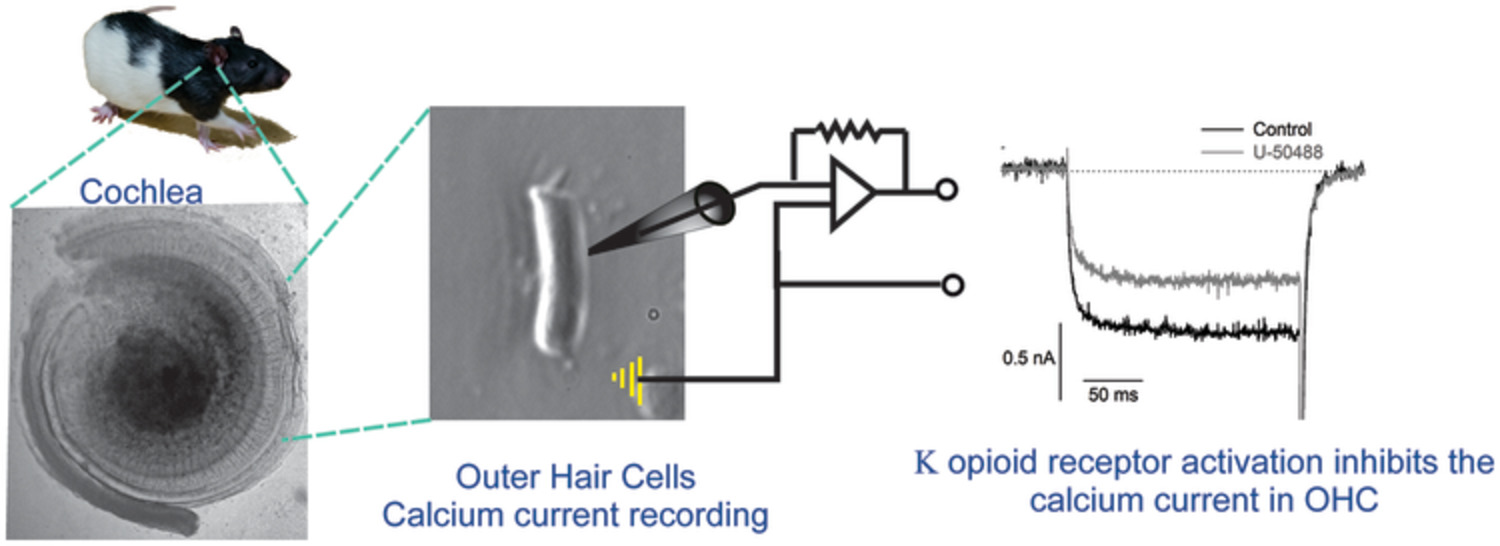
This study investigated the modulation of the ionic currents by opioid peptides in the rat outer hair cells (OHC). Voltage clamp recording of isolated OHC was performed. The results show that Kappa opioid receptor activation inhibits the calcium current in OHC, modulating the intracellular calcium concentration when OHCs depolarize. The modulation of the auditory function by opioids constitutes a relevant mechanism with a potential role in the physiopathology of auditory disturbances.
BEHAVIORAL NEUROSCIENCE
Circadian activities of the brain MNK-eIF4E signalling axis contribute to diurnal rhythms of some cognitive functions
- Pages: 3553-3569
- First Published: 28 April 2022
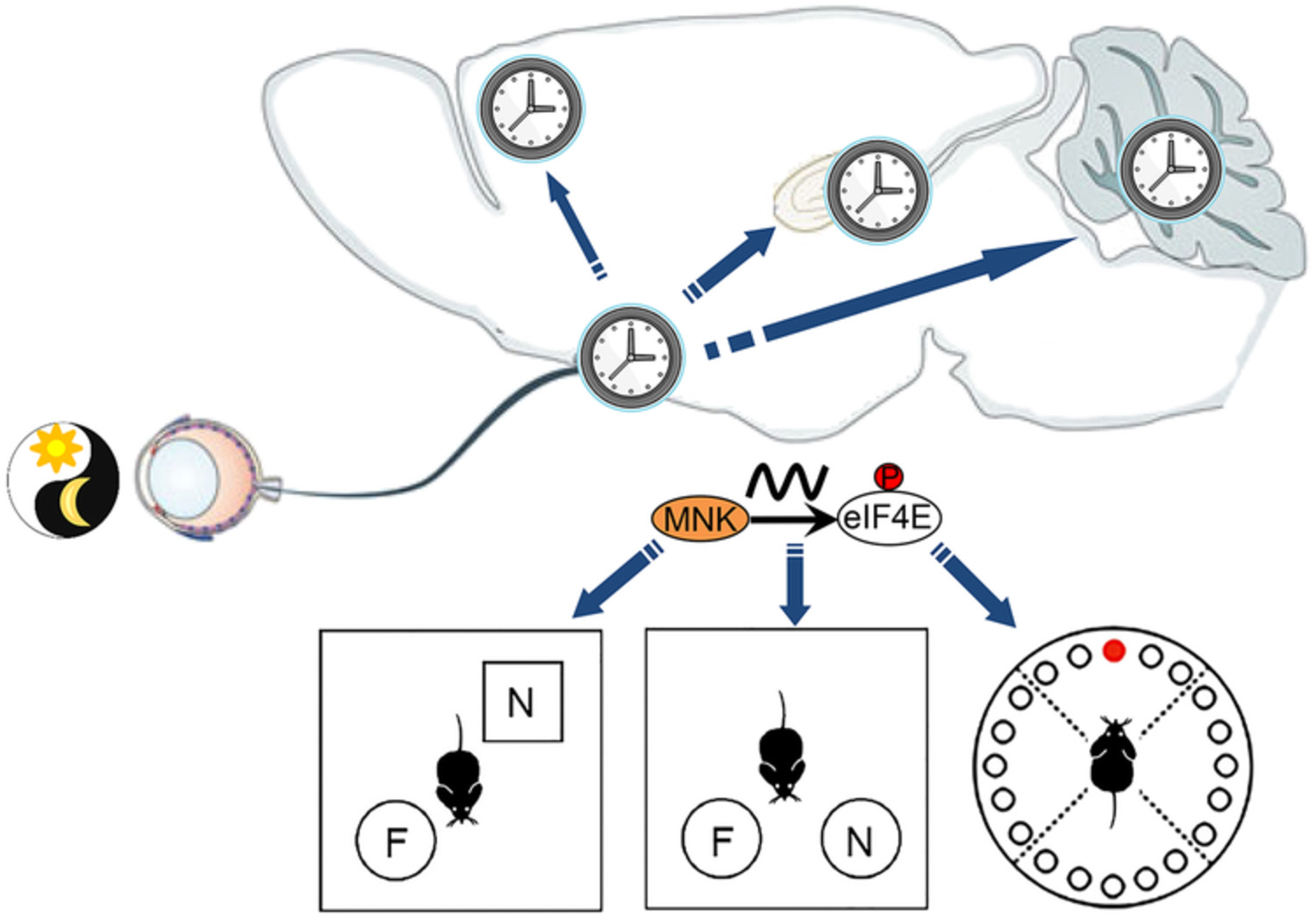
Liu et al. investigated the distribution and temporal regulation of eIF4E phosphorylation in the brain and its role in cognitive functions in mice. The results suggest that the daily rhythmic MNK-eIF4E axis contributes to behavioural responses to novel objects and the diurnal rhythms in some forms of spatial memory.
Reward versus motoric activations in nucleus accumbens core of rats during Pavlovian conditioning
- Pages: 3570-3590
- First Published: 01 May 2022

With controls for movement-related changes in firing rate (FR), nucleus accumbens core neurons increased FR in response to a Pavlovian cue predicting sucrose delivery. FR remained elevated during cued approach and was elevated during sucrose consumption, the latter being the most consistent pattern of individual neuron firing across sessions.
Brief sensory deprivation triggers plasticity of dopamine-synthesising enzyme expression in genetically labelled olfactory bulb dopaminergic neurons
- Pages: 3591-3612
- First Published: 04 May 2022

In the mouse olfactory bulb, independent cell labelling in the DAT-tdTomato transgenic line allows the study of experience-dependent plasticity in the expression of dopamine-synthesising enzymes. Brief sensory deprivation for 1 day produces a decrease in relative immunofluorescence for both dopa decarboxylase (DDC) and tyrosine hydroxylase (TH), but only the TH decrease is maintained after 3 days of naris occlusion.
COGNITIVE NEUROSCIENCE
Robustness of individualized inferences from longitudinal resting state EEG dynamics
- Pages: 3613-3644
- First Published: 20 April 2022

Longitudinal resting state (RS) activity is a promising way to track a person's brains change over long timescales. Using machine learning, we investigated methods for individualized RS-EEG tracking that are robust to inter-day cognitive and measurement variability. For RS-EEG acquired over 5 consecutive days (n = 24), individuals could be robustly identified from 2-s activity samples acquired on a different day both from RS and confounded RS with a limited loss in accuracy.
Response preparation of a secondary reaction time task is influenced by movement phase within a continuous visuomotor tracking task
- Pages: 3645-3659
- First Published: 20 April 2022
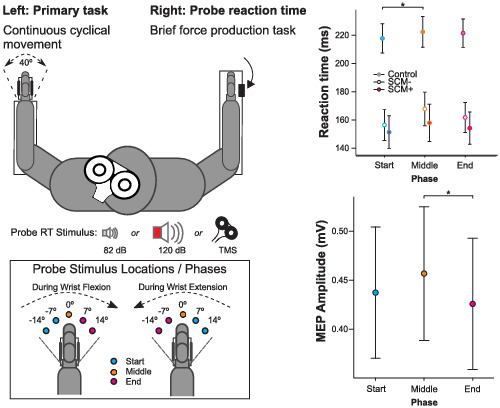
Measures of response preparation for a secondary motor task were assessed at specific locations within a continuous primary task. Probe reaction time and motor-evoked potential amplitudes were both significantly larger at locations corresponding to the middle phases of movement within a continuous primary motor task, suggesting that there are locations within continuous primary motor tasks that can impact the planning of a secondary motor task.
SYSTEMS NEUROSCIENCE
Precise functional connections between the dorsal anterior cingulate cortex and areas recruited for physical inference
- Pages: 3660-3673
- First Published: 19 April 2022

We studied the dorsal anterior cingulate cortex (dACC) as a candidate for regulating the engagement of intuitive physics mechanisms in service of our goals. We collected resting state fMRI data and independently used a physical inference task to localize the regions active during physical prediction in each participant. We found that the pattern of dACC functional connectivity precisely tracked with individual differences in task-related activity, with an individual's own functional connectivity map being the best predictor of where their activity would emerge during the physical prediction task.
5-HT2 receptor antagonism reduces human motoneuron output to antidromic activation but not to stimulation of corticospinal axons
- Pages: 3674-3686
- First Published: 20 April 2022

We examined the effects of 5-HT2 receptor antagonism on human motoneuron excitability. Cervicomedullary stimulation was used to activate motoneurons via synaptic input and evoked cervicomedullary motor evoked potentials (CMEPs). In addition, nerve stimulation was used to generate antidromic spikes in motoneurons and cause their recurrent discharge (i.e., F-waves). Compared with placebo, we found that 5-HT2 antagonism reduced the amplitude and persistence of F-waves but did not affect CMEPs.
Effects of different modalities of afferent stimuli of the lumbo-sacral area on control of lumbar paravertebral muscles
- Pages: 3687-3704
- First Published: 28 April 2022
Can training of a skilled pelvic movement change corticomotor control of back muscles? Comparison of single and paired-pulse transcranial magnetic stimulation
- Pages: 3705-3719
- First Published: 02 May 2022
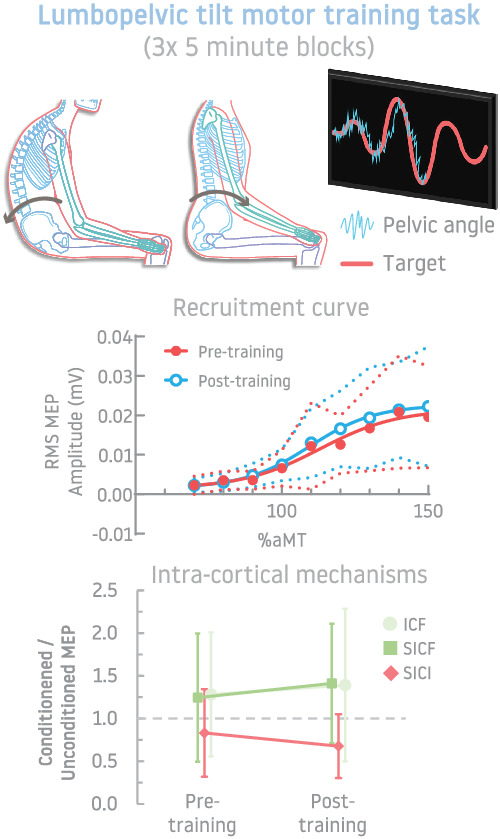
Twenty-eight healthy individuals completed a single session of a lumbopelvic tilt training task (3 × 5 min blocks). Single (recruitment curve) and paired-pulse (ICF, SICF and SICI) transcranial magnetic stimulation measures were performed pre- and post-training. A limited but significant increase in corticospinal excitability across the range of recruitment curve intensities (measured by MEP amplitude) was observed, but this was not associated with any changes in intra-cortical mechanisms.
CLINICAL AND TRANSLATIONAL NEUROSCIENCE
Role of uroguanylin's signalling pathway in the development of ischaemic stroke
- Pages: 3720-3737
- First Published: 20 April 2022
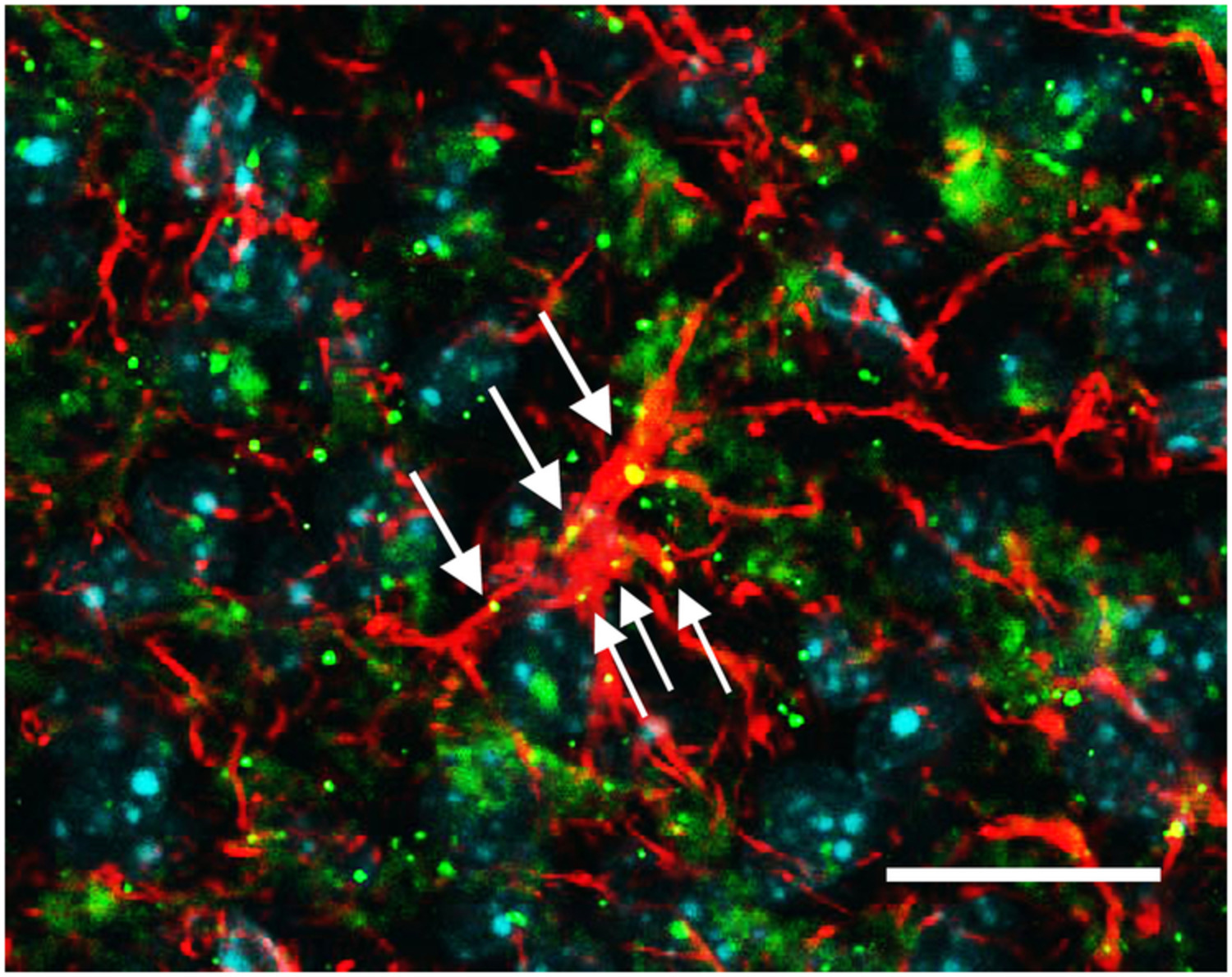
GC-C KO animals have smaller ischaemic lesion volume compared with WT littermates. The increase in Ca2+ concentration upon UGN stimulation is higher in peri-ischaemic astrocytes compared with the astrocytes of the same cortical region in the contralateral hemisphere of WT and UGN KO animals, but not GC-C KO animals. Under ischaemic conditions, peri-ischaemic cortical astrocytes express GC-C, which is not the case for astrocytes in the contralateral hemisphere.
Current perspectives on mitochondrial dysfunction in migraine
- Pages: 3738-3754
- First Published: 28 April 2022
P38 initiates degeneration of midbrain GABAergic and glutamatergic neurons in diabetes models
- Pages: 3755-3778
- First Published: 05 May 2022
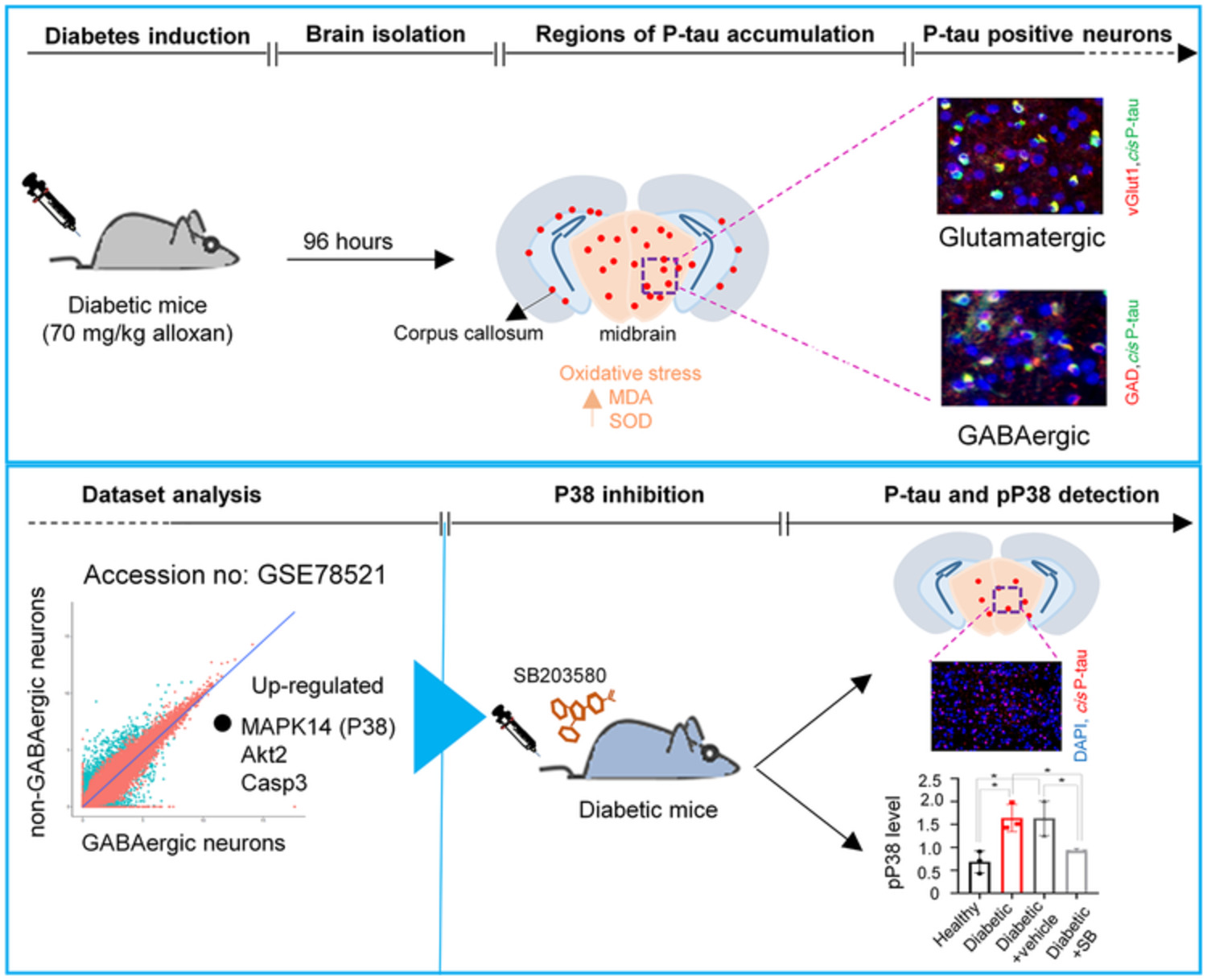
Diabetes mellitus (DM) can induce oxidative stress and drive tau pathology in the midbrain and corpus callosum. Cis P-tau as an early driver of the tau pathology accumulated in the GABAergic and glutamatergic neurons. Inhibition of the P38 by daily injection of the SB203580 suppressed cis P-tau formation and decreased phosphorylated P38 level in the TH/HY/MB of the diabetic mice.




